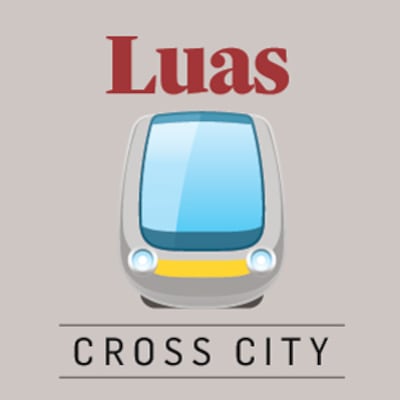The National Transport Authority (NTA) has scrapped proposals to ban cyclists from parts of Dublin city centre used by the new Luas cross city line.
The move comes after Dublin City Council’s refused to sanction the restrictions.

The authority had sought to block cyclists from using sections of the tram line which would be shared with buses and taxis and to divert them from complicated junctions where it would be difficult to cycle across the line at an angle.
It said it was concerned about cyclists’ wheels becoming trapped by the rails and their general safety in sharing road space with trams.
Areas regarded as particularly challenging included Dawson Street, Nassau Street, Lower Grafton Street and O’Connell Street.
In recent months, signs appeared at the end of Dawson Street limiting the left hand turn into Nassau Street to buses and taxis, which would have forced cyclists to make a 1.5km diversion around the back of Trinity College.
However, the signs have now been removed and replaced with signs permitting cyclists to use the shorter route in front of the university campus.
Dismount
However, NTA chief executive Anne Graham said new signs would be installed advising cyclists to dismount at this section.
“There was a consideration whether cyclists should be banned from using that section. The outcome was not to put in place a ban but have advisory notices put up that would advise cyclists not to cycle through that section particularly at busy times, but to dismount and walk through that section.”
A ban had been the NTA’s “preference”, she said, adding that there remained a concern with cyclists using the shared areas of track throughout the city centre, particularly at track crossing points.
“If buses can use it, generally cyclists can use the track, but it’s really best to try and avoid if possible cycling along the track because you can’t make those crossings safely.”
Cycling facilities could not be designed into all streets in the city where the Luas will run she said.
“What we are looking at now is where can cyclists divert away from the sections of track where we don’t want them cycling particularly at peak times.”
Brendan O’Brien of Dublin City Council’s traffic department said it was concerned about the safety of cyclists but was not in favour of restricting their movement.
“We never agreed to banning cyclists from Dawson Street so the sign was changed to include cyclists. It is something we’ve discussed at length with the NTA – we are not in favour of banning cyclists from areas of the city .”
The council was in discussions with the authority about providing alternative routes for cycling in the city, to improve facilities for cyclists, not to take them out of the equation, he said.
“You can’t really go anywhere in Dublin, north, south, east or west without crossing a Luas line. We don’t see that cyclists should be banned in the areas that are shared,” he said.
Badly overlooked
Colm Ryder of the Dublin Cycling Campaign said cyclists have been badly overlooked in the design of the new line.
“It really has been a very frustrating process dealing with the NTA the operator Transdev and Dublin city council on this. It is very late in the day, given that they have known this project is going ahead since 2011, that the ramifications for cyclists are only becoming clear to them.”
Mr Ryder said he shared the concerns of the NTA in relation to wheels becoming stuck in rail grooves and the potential for conflict with trams, but said some of these issues could be addressed through an awareness campaign. “They are not promoting these issues and not doing enough to get the message out there.”
Blue markings had been used on the road at Parnell Square to guide cyclists over the tram lines on a pilot basis, but although this seemed successful, it wasn’t followed up elsewhere in the city, Mr Ryder said
His organisation would also welcome discussion about the use of alternative parallel routes and contra flow lanes for cyclists, he said
“All these issues should have been envisaged at the planning and design stage. It is vital that cyclists are kept in the city centre.”










